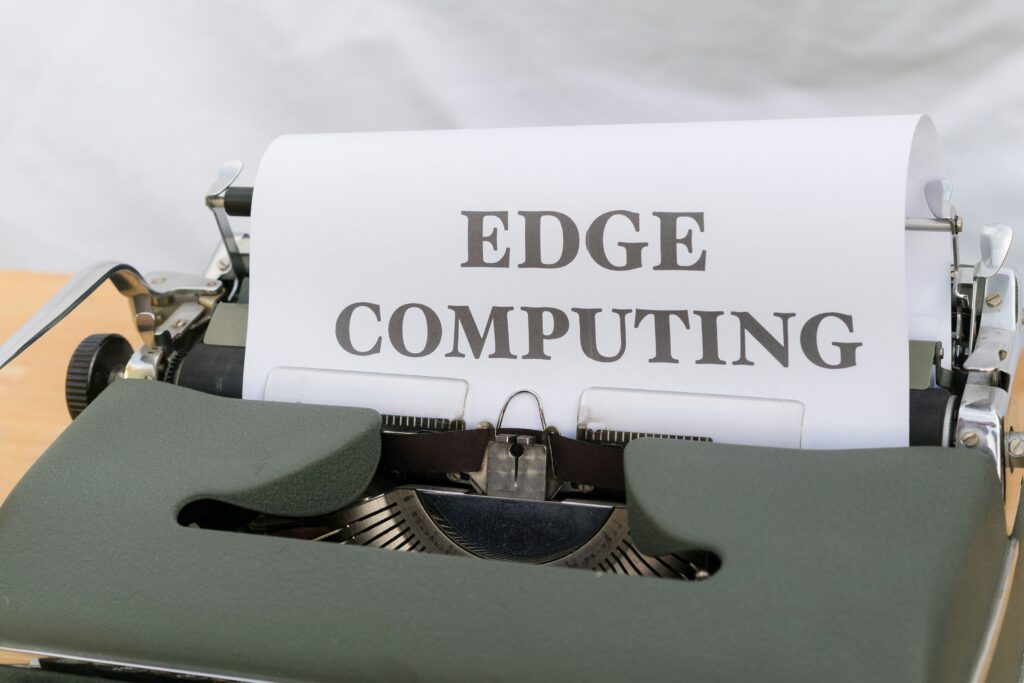Why Low Latency is Fueling the Future of Real-Time Tech
In 2024 and beyond, seamless user experiences are non-negotiable. From autonomous vehicles navigating traffic to augmented reality overlays responding in real-time, low latency is becoming the backbone of next-generation digital applications.
Instant Responses, Real Impact
The role of reduced latency goes far beyond just “faster” apps. It enables critical, time-sensitive decisions—and in some cases, safety.
- Faster response times mean systems can react in near real-time
- Applications like telemedicine and remote surgeries demand ultra-low latency
- Millisecond-level delays can be the difference between success and failure in high-risk environments
Real-Time Apps Are Leveling Up
The bar is rising for performance in real-time applications—and low latency is making it possible.
- Autonomous vehicles rely on real-time sensor feedback for navigation and safety
- Internet of Things (IoT) networks require split-second reactions across devices
- Augmented and Virtual Reality experiences depend on minimal visual and control lag for immersion
Leaner Networks, Smarter Systems
Improved latency often comes alongside more efficient use of data bandwidth. This reduces strain on infrastructure while boosting speed and reliability.
- Lower latency = lower bandwidth needs for the same task
- Optimized networks support more users and devices with fewer resources
- Businesses can scale smarter, not just bigger
Low latency isn’t just a nice-to-have—it’s a core requirement for building the future of connected, intelligent technology.
AI Is Speeding Up Workflow—Without Replacing Humans
AI isn’t taking over the vlogging space—but it’s definitely punching the clock. Generative tools are now handling tasks like video editing, script drafting, thumbnail selection, and even basic research. For creators stretched thin, AI transforms the daily grind into something more manageable. It’s about speed, not replacement.
The reality check: AI can cut down editing time and help finesse language, but it still lacks nuance. Top vloggers know their voice is their brand, and they’re careful not to lose that to an overly polished, algorithm-spit template. The smarter move? Use AI to handle repetitive tasks while staying hands-on for anything that touches personality or tone.
Some creators are using AI to storyboard in minutes or generate multiple hook options before shooting. Others are automating captions and translations to reach broader audiences. What they’re not doing: handing over full narrative control. It’s a co-pilot, not the pilot. That distinction is what keeps audiences engaged—and coming back.
Edge computing isn’t new, but it’s finally hitting mainstream traction—and fast. The core idea is simple: instead of sending all your data to a remote cloud server for processing, edge computing keeps it closer to where it’s generated. Think devices, sensors, local servers—anything that can analyze and react without long-distance data trips.
Compared to traditional cloud computing, where most work happens in centralized data centers, edge computing is all about real-time efficiency. No more lag from round-trip data delays. That’s a big deal for applications like autonomous vehicles, live streaming, or smart security cams, where even a fraction of a second counts.
So why now? A few reasons. First, the explosion of IoT devices. Second, users expect everything to be faster—instant processing, zero buffering, no hiccups. Third, it’s becoming cheaper and easier for developers and creators to tap into edge infrastructure. For vloggers and content creators, this could mean slicker uploads, faster processing, and smarter tools that operate locally.
Edge isn’t replacing the cloud—it’s complementing it. But for anyone dealing with high-speed, high-volume content, it’s a shift worth understanding now, not later.
Edge Computing Is Reshaping Data Center Design
Edge computing isn’t just a trend—it’s redefining how data centers are structured and scaled. As demand increases for faster, real-time data processing, traditional centralized models are making room for agile, localized architectures.
The Shift in Data Center Architecture
Traditional data centers are giving way to hybrid models where edge computing plays a central role. Instead of relying solely on monolithic data centers located far from end-users, businesses are leveraging distributed nodes to reduce latency and improve responsiveness.
Key changes driven by edge computing include:
- Decentralization: Critical workloads are moving closer to the user to reduce round-trip data times.
- Scalability by proximity: Services are expanded not by size, but by location and responsiveness.
- Adaptive infrastructure: Edge nodes often operate autonomously with lightweight management layers.
The Rise of Micro Data Centers
Micro data centers—compact, modular systems deployed closer to data sources—are becoming essential components of modern IT infrastructure. These units can be placed in smart buildings, retail outlets, warehouse facilities, and even remote locations.
Benefits of micro data centers include:
- Reduced latency: Local processing means faster response times for applications and devices.
- Targeted resilience: Redundancy built at the edge cuts down on centralized vulnerabilities.
- Cost-efficiency: Lowered bandwidth and infrastructure expenses through localized processing.
Localized Routing Points
Edge computing also promotes the establishment of local routing points and mini data hubs, which significantly optimize traffic flows. These routing points help manage data transmission between devices, users, and the broader network infrastructure.
Impact areas:
- Smoother content delivery for streaming and real-time apps
- Efficient bandwidth usage with localized decision-making
- Better performance in underserved or rural regions
Security and Compliance Challenges at the Edge
With new architecture comes new complexity—especially regarding security and regulatory compliance. Operating at the edge exposes sensitive data to a wider array of physical and digital threats.
Emerging security considerations include:
- Increased attack surface: More devices and entry points mean a greater need for protective layers.
- Data jurisdiction concerns: Localized processing must adhere to regional data protection laws.
- Autonomous threat mitigation: Edge systems may need built-in, AI-driven security measures to operate without centralized oversight.
The New Norm
As organizations adopt edge computing, the “norm” for infrastructure is moving toward flexibility, locality, and security. Success hinges not just on adopting edge technologies, but on architecting systems that can scale securely and efficiently across dispersed environments.
Edge and cloud aren’t competing—they’re tag-teaming. Edge handles the fast stuff: quick processing near the data source, minimal latency. It’s the go-to for real-time video rendering, live-streaming, or any scenario where delay kills the user experience. Meanwhile, the cloud offers scale. It stores, backs up, and analyzes massive volumes in ways edge just can’t.
This balance is powering hybrid models, and vloggers are starting to feel the benefits. Imagine a setup where your camera gear does quick AI-enhanced edits on-device (edge), but your full footage uploads seamlessly to the cloud for archive, distribution, or deeper optimization later. Processing is local. Storage is global. It’s faster and more efficient than betting on one over the other.
Edge shines when reaction time matters. Cloud dominates in long-term data crunching and reach. Together, they let creators move quicker, work smarter, and keep their work both nimble and safe.
(For more on evolving cloud strategies, see Tech Giants Redefining Cloud Services: A 2024 Overview)
Edge is About Speed, Resilience, and Smarter Systems
The concept of “edge” in 2024 extends far beyond the latest tech buzzword. For modern creators and digital entrepreneurs, edge computing and edge-powered workflows offer something critically important: real-time responsiveness, scalability, and strategic advantage.
What Does “Edge” Really Mean?
Edge isn’t just about hardware speed. It’s about systems that:
- Deliver content and services with minimal latency
- Operate reliably, even in bandwidth-strained environments
- Respond quickly to user behavior and real-world feedback
Whether you’re streaming in high-definition, running real-time analytics, or collaborating on a global content calendar, edge systems are becoming a vital part of your creative infrastructure.
Why Edge is a Competitive Advantage
Creators and businesses that rely on sluggish systems will get left behind. In contrast, becoming edge-ready means you’re:
- Able to adapt quickly when trends shift
- Running efficient, fail-safe systems across devices and platforms
- Minimizing downtime and maximizing audience experience
In short, edge solutions make it easier to produce, distribute, and refine content faster than competitors.
Looking Ahead: Invest in Edge-Readiness
Adopting edge capabilities isn’t just an upgrade—it’s a strategic shift. As digital content becomes more immersive and interactive, creators who make early investments will lead the way.
Key areas to watch:
- Real-time rendering and editing tools
- AI-enhanced production pipelines
- Smarter content distribution networks
Being edge-ready is no longer optional—it’s foundational to staying ahead in the creator economy.
Edge computing isn’t just a buzzword anymore—it’s the backbone of how cities, factories, and stores are getting smarter, faster, and more efficient. In smart cities, edge-connected sensors and devices help manage traffic in real time, sniff out power inefficiencies, and adapt energy output on the fly. Whether it’s rerouting buses due to a game-day surge or dimming streetlights in low-traffic zones, the adjustments happen locally and instantly.
In industrial settings, edge tech is leading a quiet revolution. Machines flag their own issues before breaking down, thanks to predictive maintenance. Production lines adjust on the fly based on incoming data from nearby sensors. The result? Less downtime, more uptime.
Retail isn’t just watching anymore—it’s reacting. With edge-driven analytics, stores can tweak pricing dynamically, monitor customer movement, and even rearrange stock based on heatmaps, all without waiting for data to travel back to a distant cloud.
Powering much of this are ecosystem giants like AWS and Microsoft Azure, both of which have gone all-in on edge and hybrid solutions. But don’t sleep on newer edge-first startups—they’re scrappier, faster, and often more specialized. They’re not just chasing trends—they’re defining them.




